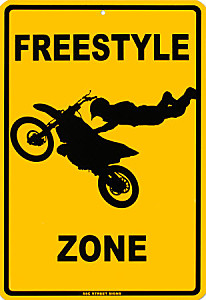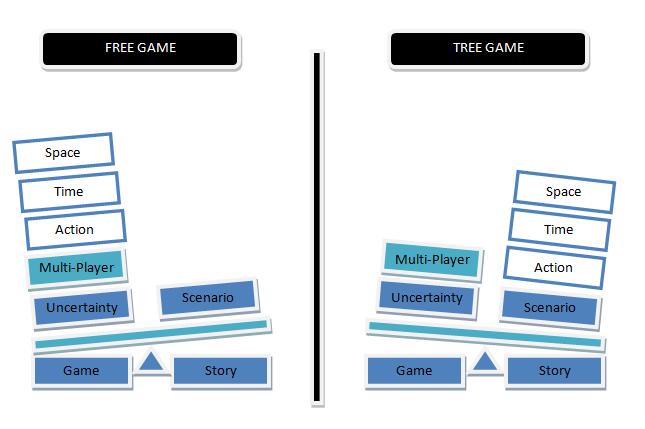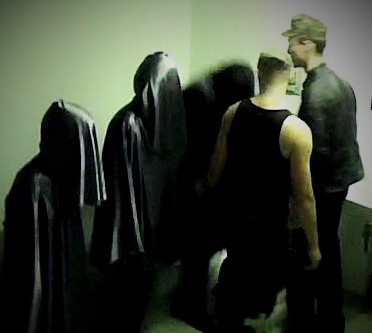Original post : http://www.electro-gn.com/310-lesjeuxfreestyle
Translation : Leïla Teteau-Surel
We can think of dozens of ways to categorize larps : by the length, the number of players, the theme, the scenario-building, and so on. The kind of larp I’m gonna focus on is based on bringing more involvment from the players in the creative part of the story.
In a lot of games (we could take the risk to say : in more and more games 1), larp designers have a tendency to do their best to control the evolution of the story they’re gonna make the characters live. This is an understandable tendency since it’s the mastering over the dramatic arch that enables to tell a beautiful story leaving a strong souvenir in player’s memory. However when this will is pushed to its height there’s a high risk to fall into a rail-roaded way to design scenarios which may create frustration. Even if characters keep their free will, if they’re too much directed by their plots, by the theme and by the events players won’t be fooled and some might have the unpleasant feeling that they had a determined fate. Maybe they had a choice between two or three options but they were anyway rail-roaded.
But if there’s one specific feature of role-playing game over novels, theatre or cinema it’s indeed that the story-creation is collective. Yes the larp writer give a setting at the beginning of the game and design it as he wants to enable the evolution of the character but each player drive the process of the game. Some players consider that their freedom of action matters more than the control of the dramatic arch and larps designers make them happy by writting and organizing what I’ll call here : freestyle larps. This kind of larp exist since a long time but this concept come before all from the organization « Mondes Parallèles » which was -even if not the only one- the leading one to do so during few years 1, like « Ice Flying Frauleins » organized in 2006, or « Esprits de Famille » (Family Spirits) in 2008. A game like Studio Bloodywood, – we recently talked about it – has also a lot in commons with this « larp-family ».
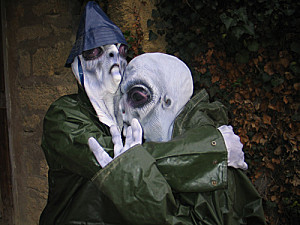
A freestyle larp is a game strongly moving the fader in the direction of player’s freedom and in wich the universe created by the organizer is setback comparing with what players ‘ll do with it during the game.
Though, writing a freestyle-larp is not as easy as it seems. For sure it’s quicker and simpler than a game with directing tendencies that ‘d try to give the best illusion of freedom, but it’s not enough to establish a setting where you put the characters on the loose. Not all larps players have the capacity to improvise, they need material to do so. First of all, characters they can easily integrate : it’s better to have caricaturish characters with a well-defined theme but who let an important freedom in the interpretation rather than more subtiles roles, harder to take in the hand, which would ask more implication but leave little room for player’s creativity. Then this style of game avoid to focus on complicated relations plots between characters that could brider players in their interpretation. It’s more about writing simple relationships players ‘ll developp according to their desires. A sentence in your character sheet saying that Joe is your best friend since twenty years is enough in freestyle game : no need to describe thoroughly this relation and to elaborate possible directions for its evolution, players will take that in charge themselves during the game.
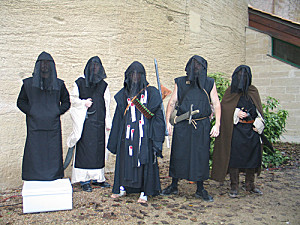
The work on the scenario focus more on elements that ‘ll push players to react, to improvise, to take real decisions, to sum up : to « create » the game. It can be achieved through general plots among which players ‘ll pick what they’re interested in, by events enhancing the atmosphere, by leaving objects/material players can manipulate, and so on. Exploring unlikely themes take its full meaning in Freestyle larp. It doesn’t matter here that you limit yourself to a clear an unique theme, better to go through multiple references and transform them joyfully, in order to offer the players a large palette of themes to explore, according to their desires. It’s the time for scenarists to let themselves go into eccentric experimentations. However the essential component for this gaming style is the author’s will to leave players off the leash. Here taking intiative is encouraged, and you only have to see the organizer in case of logistic problem. Every player has an influence on the game far more important than in a directed game, with the scenarists’ support.
The direct consequence : from the outside you can have the feeling of a crazy and meaningless patchwork since every player-creator bring his own idea, without it being consistent nor even in the same tone that his neighbour’s one. A player-observer looking at the scenes around him could frankly ask himself where did he arrive, but it’s by accepting the absurdity of the situations and through an active participation to this multi-headed œuvre that you can begin to benefit from the deliciously baroque atmosphere of a Freestyle larp.
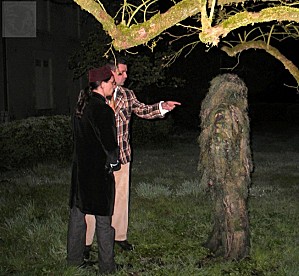
This aspect emphasizes all the risk-taking this kind of game represent since the organizer need to trust fully his players for the game to work. Instead of drawing the way to follow, the author give the tools to go further without any idea of the direction the players will take. After all nothing guarantee they’re not gonna throw themselves in a dead-end after few hours or stay where they are without knowing how to use the tools they’ve been given. But isn’t taking risk necessary when organizing a larp ?
Some ‘ll say only a perfectly mastered scenario is worthwhile and some others ‘ll only swear by their total freedom of play, some others ‘ll think that the ideal larp should be a measured compromise between this two aspects. As far as I’m concerned I appreciate every game in its own style, and consider this diversity among ways of playing as one of the treasure of larping.
